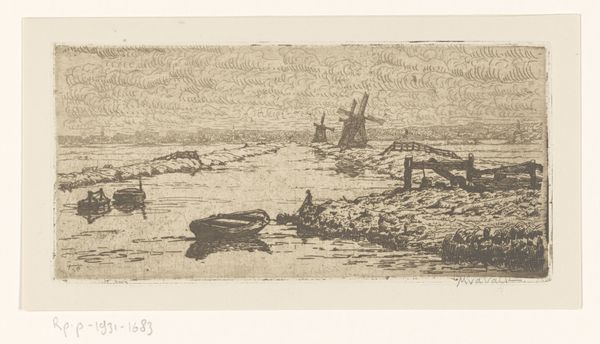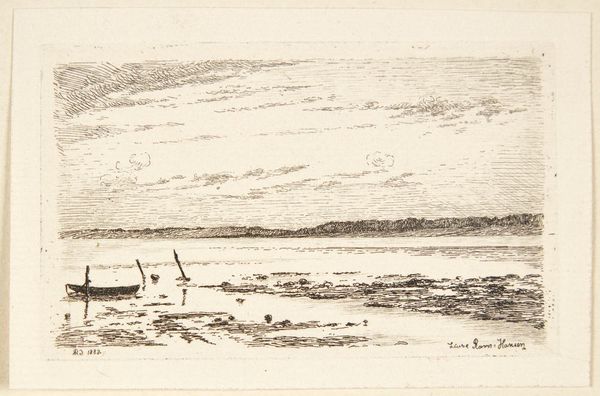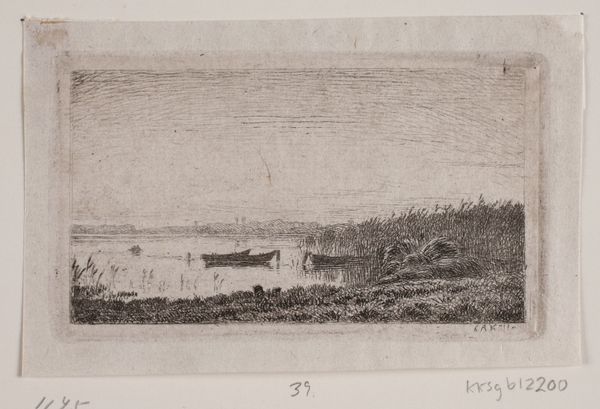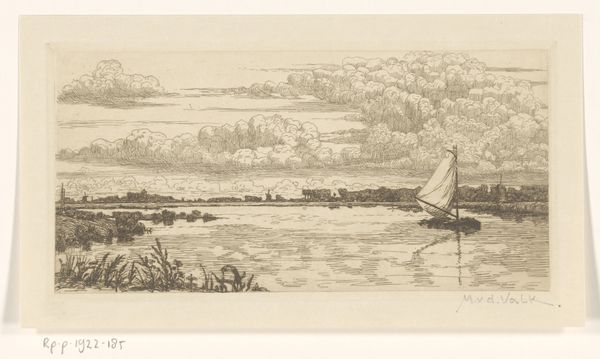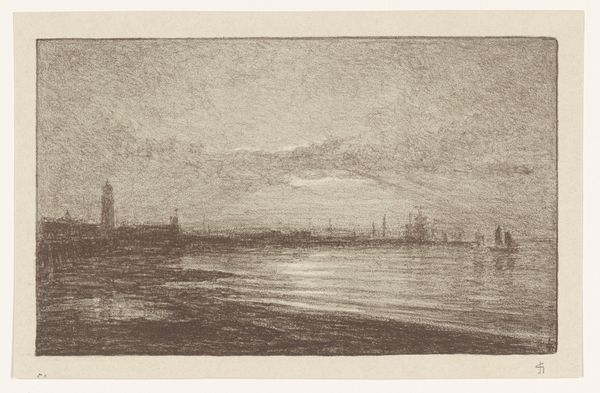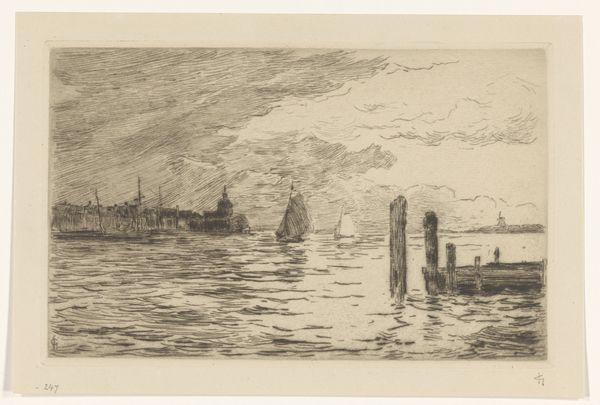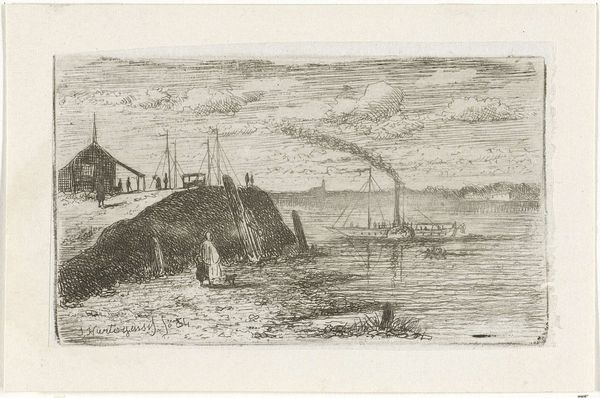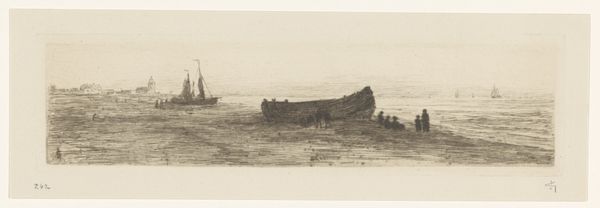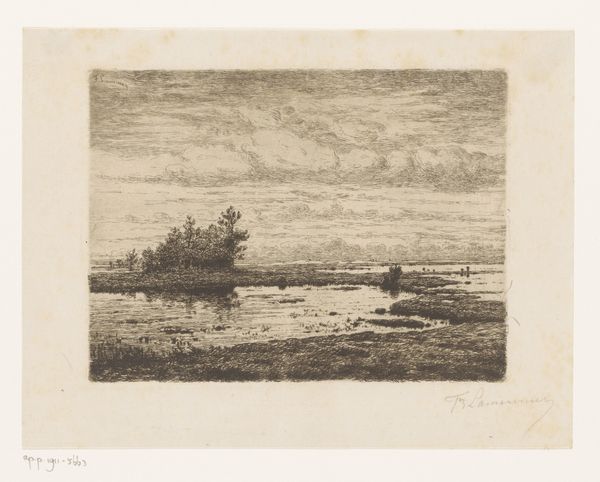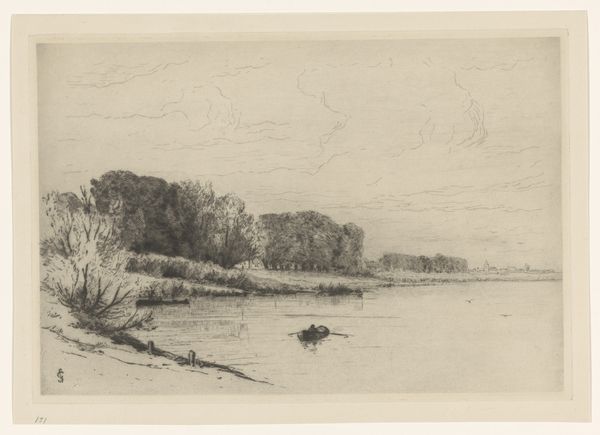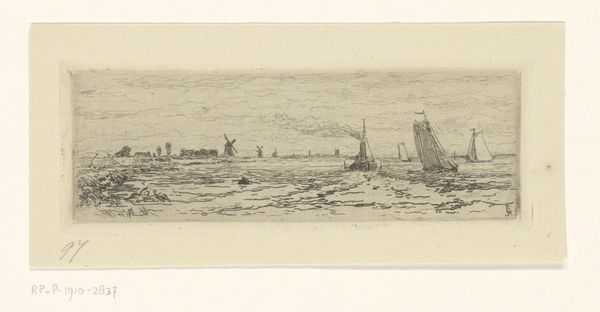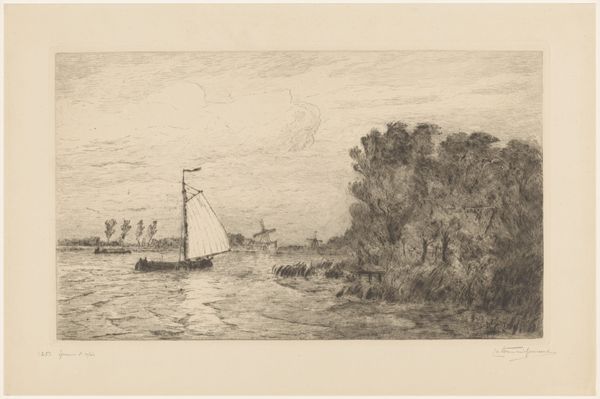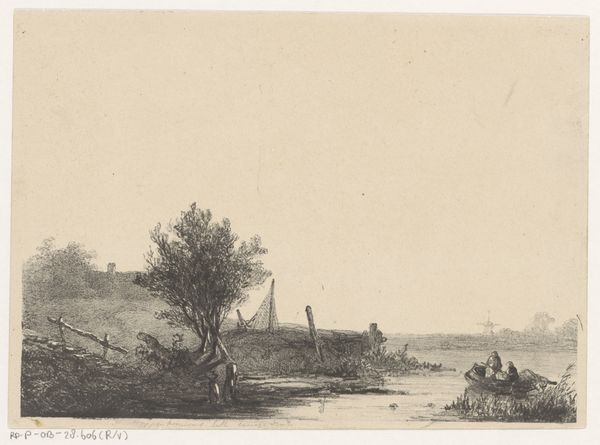
Dimensions: height 340 mm, width 488 mm
Copyright: Rijks Museum: Open Domain
Editor: This pencil drawing, "Gezicht op de Rijn bij Elten," or "View of the Rhine at Elten," is attributed to Carel Nicolaas Storm van 's-Gravesande, dating from around 1851 to 1902 and it’s currently held in the Rijksmuseum. I’m struck by its tranquil yet slightly melancholic mood. What can you tell me about it? Curator: It's fascinating how Storm van 's-Gravesande captures this specific locale along the Rhine. Consider the political and economic significance of the Rhine River in the late 19th century. How might that have shaped his decision to depict this scene? Editor: So, more than just a pretty landscape, this artwork perhaps alludes to trade routes and industry? Curator: Precisely. It represents a burgeoning industrial age, even if subtly. And where does the art fit into this rapidly changing world? Van 's-Gravesande, while trained in the Hague School style focusing on realism, hints at the growing interest in the picturesque but with restraint. Notice the delicate use of light. Editor: You are right! The soft light on the water feels intentional. Was he perhaps making a statement about artistic movements of the time? Curator: Perhaps not an explicit statement. It is a cultural commentary. Landscape painting, by this time, had become increasingly intertwined with national identity. How did representations of the Dutch landscape contribute to a shared cultural understanding of "Dutchness"? It seems here he is observing but not sentimentalizing the landscape. Editor: It sounds like he's observing the quiet, changing reality. Curator: Exactly! What I take away from this piece is less about aesthetic beauty and more about understanding the socio-political climate that framed the production and reception of such art. This allows us to think critically about what is missing in landscape drawings and what historical purpose they fill. Editor: This discussion shifted how I saw this work. I didn't realize how much the context could shape your impression of such a seemingly simple landscape. Curator: Art's public role is multi-faceted, isn't it? This work can remind us of the politics that underpin all artistic expression.
Comments
No comments
Be the first to comment and join the conversation on the ultimate creative platform.
